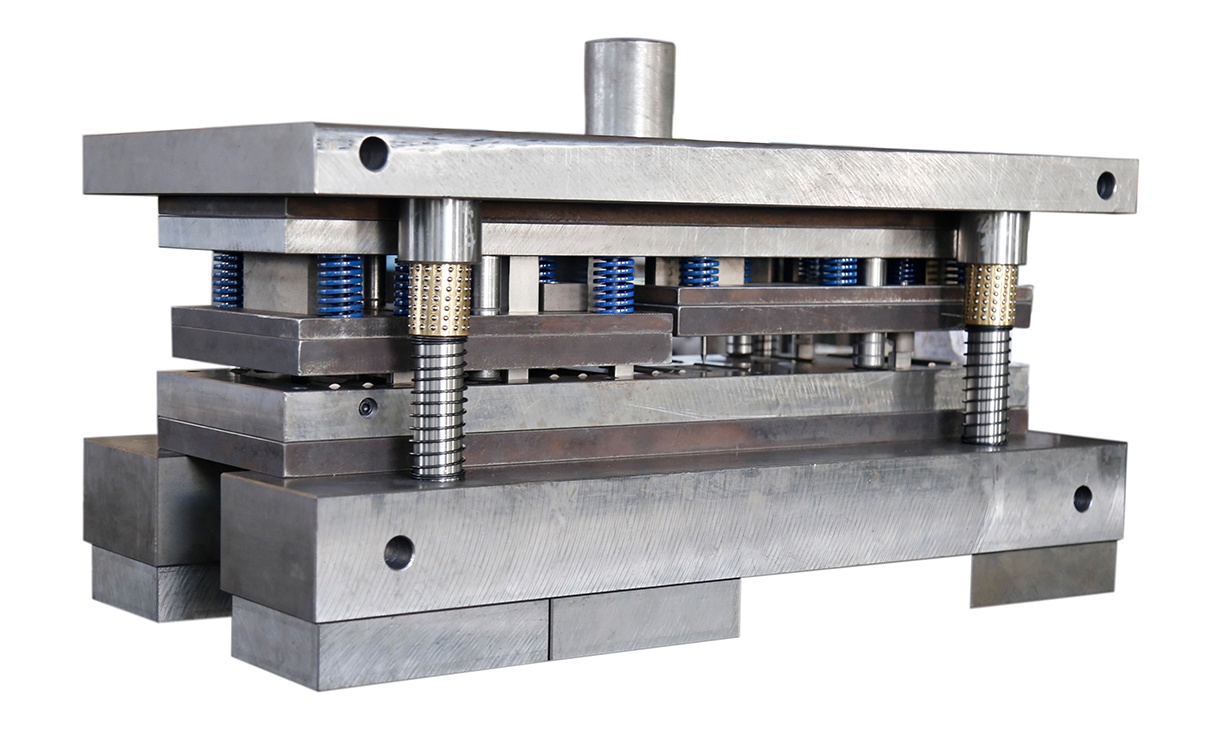Enhancing the Lifespan of Stamping Molds: Key Strategies and Techniques
Sep 25, 2024
Stamping molds play a pivotal role in the manufacturing industry, enabling the production of precise and consistent components. To maximize their value and minimize costs, it is essential to enhance the lifespan of these molds. This article explores the key strategies and techniques for improving the longevity of stamping molds.
Proper Mold Design and Material Selection:The foundation of a durable stamping mold lies in its design and material selection. Emphasize robustness and consider factors such as tool steel quality, hardness, and heat resistance. Choosing appropriate mold materials, such as high-grade steels or alloys, ensures resistance to wear, corrosion, and thermal stresses.
Thorough Maintenance and Cleaning:Regular mold maintenance and cleaning are vital for prolonged lifespan. Establish a maintenance schedule that includes inspecting, cleaning, and lubricating the mold components. Remove any debris, rust, or residue that can potentially affect mold functionality. Proper lubrication reduces friction and prevents premature wear.
Implementing Effective Cooling Systems:Efficient cooling is essential for controlling heat during the stamping process. Adequate cooling channels integrated into the mold design help dissipate heat and promote uniform temperature distribution. Maintaining optimal temperatures prevents thermal fatigue and extends mold lifespan.
Using Protective Coatings:Applying protective coatings on mold surfaces can significantly enhance durability. Various coatings, such as nitride, chrome, or diamond-like carbon (DLC), improve wear resistance and reduce friction. These coatings minimize surface damage caused by contact with stamping materials, increasing mold longevity.
Monitoring and Adjusting Stamping Parameters:Monitoring stamping parameters, such as pressure, speed, and temperature, is crucial for optimizing mold performance. Carefully analyze the stamping process to identify any anomalies or indicators of excessive strain on the mold. Adjusting parameters to optimize performance can prevent premature mold failure.
Implementing Proper Lubrication Techniques:Lubrication is critical to reduce friction and wear within the mold. Choose appropriate lubricants specifically designed for stamping operations. Apply lubricants at recommended intervals and ensure proper distribution throughout the mold. Effective lubrication prolongs mold lifespan by minimizing friction-related damage.
Addressing Surface Wear and Damage:Over time, stamping molds may face surface wear or localized damage. Promptly address any surface irregularities by utilizing techniques such as polishing, grinding, or repairing. Restoring the mold surface to its optimal condition prevents premature failure and extends the mold's usability.
Regular Mold Inspections and Testing:Regular inspections and testing provide valuable insights into mold performance and potential issues. Conduct visual inspections to identify signs of wear, cracks, or damage. Non-destructive testing methods, such as ultrasonic or magnetic particle inspections, can reveal hidden defects. Identifying and addressing problems early on can prevent catastrophic mold failure.
Collaboration and Communication:Effective collaboration and communication between mold designers, operators, and maintenance personnel are vital. Encourage the exchange of knowledge and experiences to improve mold performance. Regular feedback and information sharing can lead to proactive measures for enhancing mold lifespan.
Improving the lifespan of stamping molds requires a comprehensive approach that encompasses proper design, material selection, regular maintenance, optimized stamping parameters, and effective surface treatments. By implementing these strategies and techniques, manufacturers can maximize the value of their stamping molds, minimize downtime, and reduce costs associated with mold replacement. Investing effort in mold longevity ultimately leads to improved operational efficiency and increased competitiveness.
